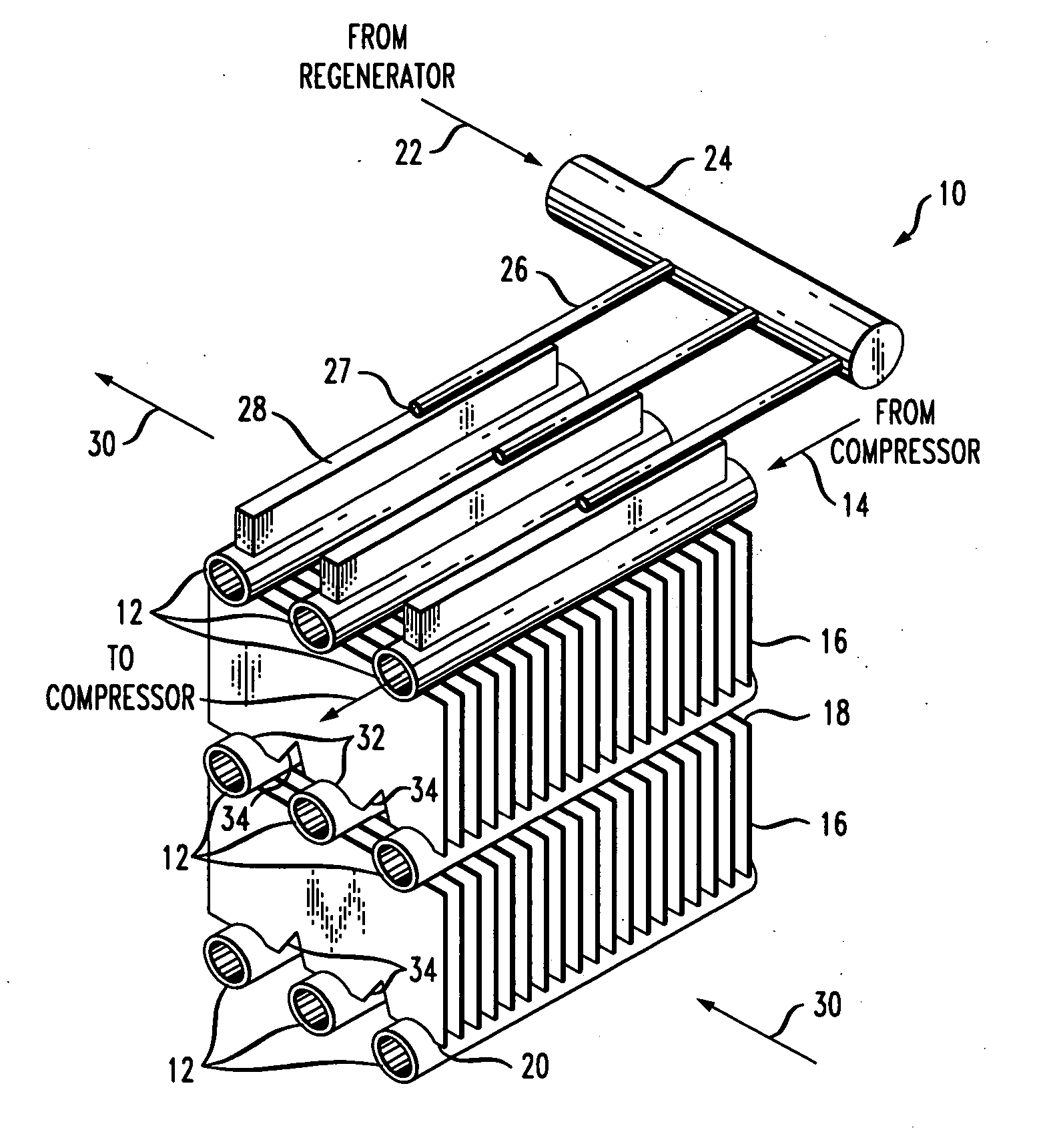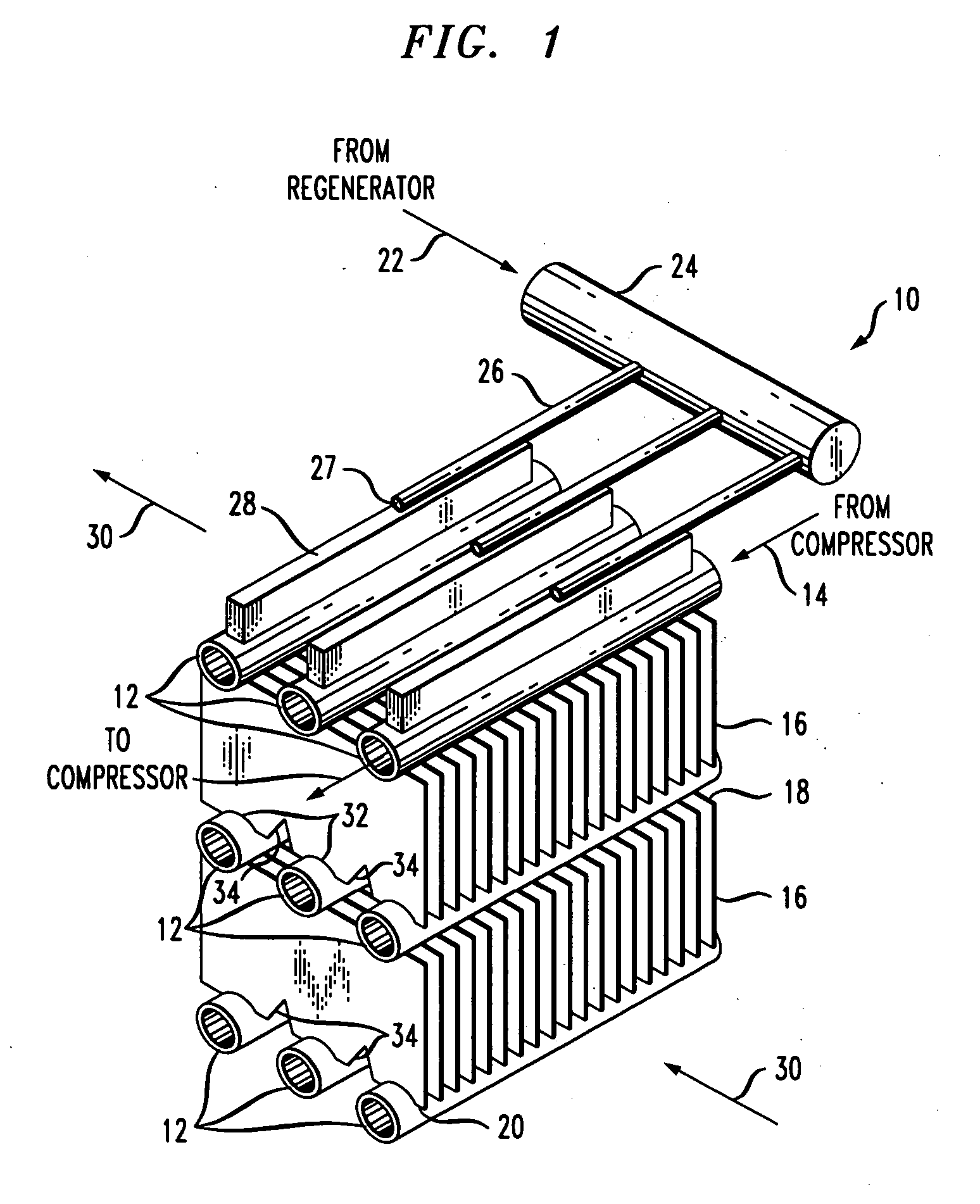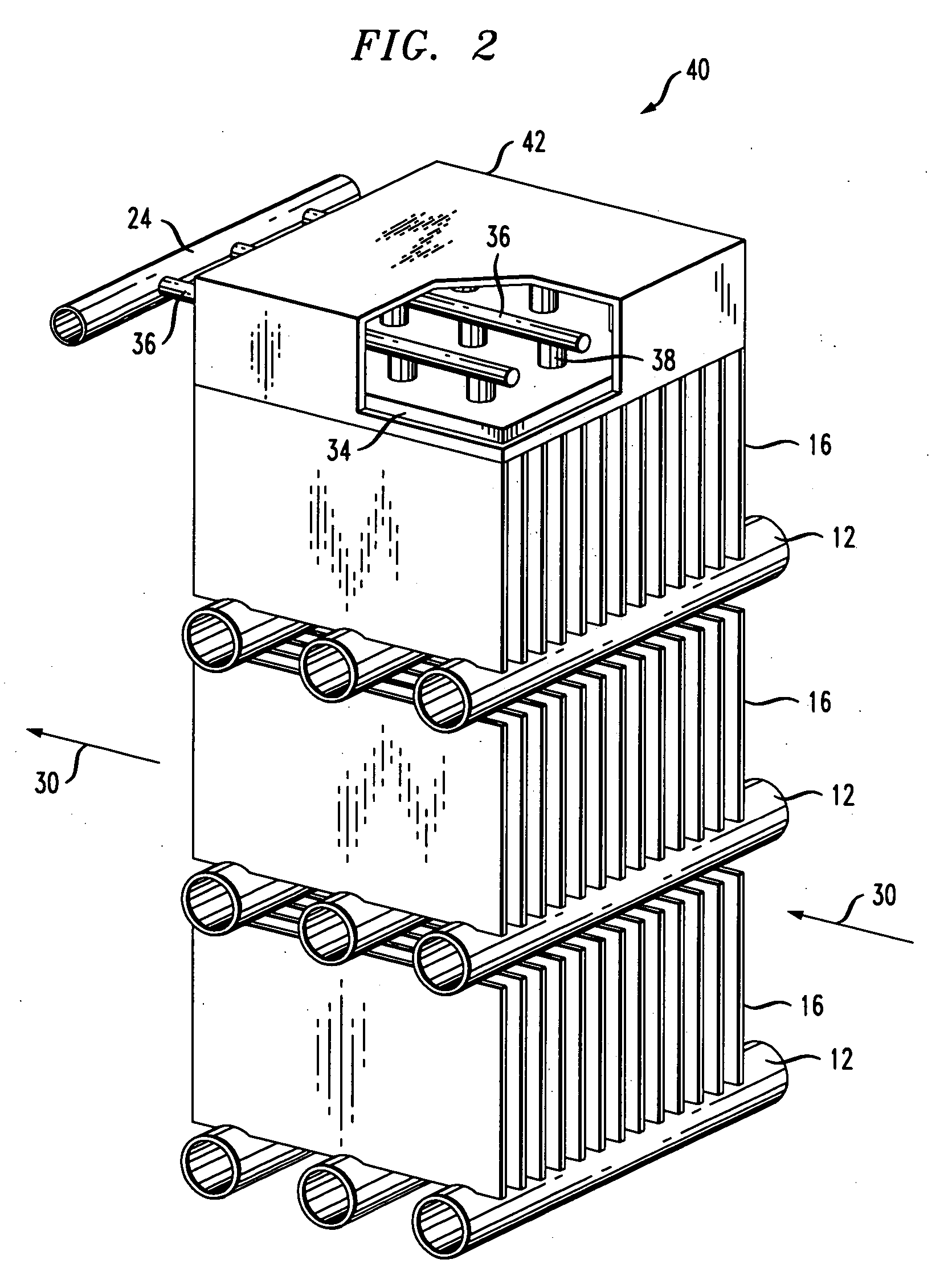Heat and mass exchanger
a mass exchanger and heat exchange technology, applied in the field of thermodynamic devices, can solve the problems of few systems being able to effectively regulate air humidity, two factors can be in conflict, and the humidity can soar to levels that are uncomfortable or even unhealthy, and achieve the effect of enhancing the exchange of thermal energy and efficient exchang
- Summary
- Abstract
- Description
- Claims
- Application Information
AI Technical Summary
Benefits of technology
Problems solved by technology
Method used
Image
Examples
example
[0108] In this example, a mass and heat exchanger that is designed according to the principles taught herein is installed in a vapor-compression air conditioner to replace a conventional evaporator. The replaced conventional evaporator is an industry-standard finned-tube heat exchanger with copper tubes and aluminum fins. The conventional evaporator possesses the following characteristics:
Total number of tubes92Number of tubes in vertical column23Number of tube columns 4Tube outer diameter0.3325 inFin orientationvertical and perpendicular to tubesFin height24.0 inFin width2.5 inFin thickness0.010 inFin spacing13 fins per inchVolume of air processed1000 cfmFace velocity for incoming air263 fpm
[0109] With R-22 refrigerant evaporating at a saturation temperature of 49° F. within the tubes of this heat exchanger and 1000 CFM of air entering at 80° F dry-bulb temperature and 67° F. wet-bulb temperature flowing over the outside of the fins and tubes, the conventional heat exchanger abso...
PUM
 Login to View More
Login to View More Abstract
Description
Claims
Application Information
 Login to View More
Login to View More - R&D
- Intellectual Property
- Life Sciences
- Materials
- Tech Scout
- Unparalleled Data Quality
- Higher Quality Content
- 60% Fewer Hallucinations
Browse by: Latest US Patents, China's latest patents, Technical Efficacy Thesaurus, Application Domain, Technology Topic, Popular Technical Reports.
© 2025 PatSnap. All rights reserved.Legal|Privacy policy|Modern Slavery Act Transparency Statement|Sitemap|About US| Contact US: help@patsnap.com



